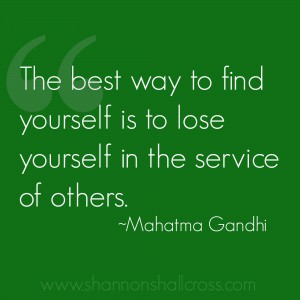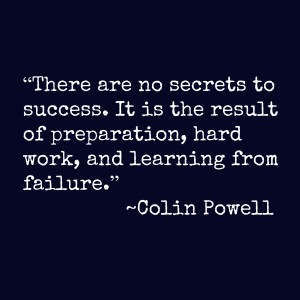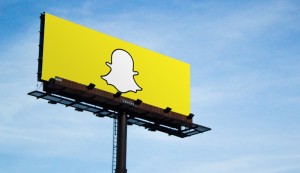3 Reasons Why We Need to Love Our Service People
Customer Service
Your customer’s “punching bag” holds the keys to your company’s success.
Customer service is one of the most challenging career roles out there. Over my 20 years working in service positions from the front lines up to executive decision maker, I have been screamed at by customers, cursed at, personally threatened, and told that I am incompetent. Countless times, I have been on the phone for over an hour with customers who were on a furious tirade on how my company (referred to as “you people”) wronged them. Being a customer’s “punching bag” used to bother me. In fact, I still remember my very first night on the job as a waitress in my teens, pin-balling between 10 tables during my shift. After burning my hand while serving mushroom bisque, I quickly brushed away tears, hiding them from the expectant eyes of my 3 tables that were unhappy with their meals. The time that I spent on the service front lines has helped me to gain a special appreciation for how those dedicated to providing customer service in our companies play a big role in our success. Here’s why:
- Good service people have an uncanny skill set.
Let’s face it — jobs in service are not for work-criers. Service professionals need to not only develop a thick skin, but they also need to have a soft approach that is likeable so they can diffuse tough customer issues. Being tough and soft at the same time? Not easy. It takes a rare combination of skills. When people who work in service are good at what they do, they have excellent people skills, they are optimistic, and they are good at humbly listening to lengthy soapbox speeches. They can remove emotion from the conversation in order to identify the true problem and the right solution. Good service professionals have empathy, humility, patience, and the emotional control to not be threatened by a customer who is so angry that they lose their cool. Empathy, the ability to listen, approachability, and humility — not surprisingly these skills are traits that are shared with some of the most respected leaders. And successful leaders understand how the voice of the customer drives a company’s success. Good service people who aspire to hold leadership positions can take heart in knowing that their hard work in the trenches of a company is fine-tuning a rare set of skills that can set them up for future success.
2. Great service people love the challenge of making customers love your company.
The angry customers, the recurring issues that seem to never end — this is the ugly part of client service. Who wants to be yelled at for a living? But this negative view is only a corner in the big picture of a job in service. Sure, there are customer problems that need to be solved, but in most companies handling issues is only a small part of providing great service. Filling much of a service professional’s time are wonderful, positive customers whose calls are the highlight of their day. This is what working in service is really about — strengthening relationships with people. The fun part for a service person is talking with people who have been 30-year customers, people who have enthusiastically referred their entire family to the company, and the customers who take the time to say that your company just made their day. Great service professionals love people, and they care about helping them. They understand that getting customers to the point where they love your company solidifies a customer’s loyalty to your business for years to come. To them, interacting with customers is uplifting, interesting, and fun. They love making people love your company. THIS is how great service people see their job.
3. Your best service people will drive your business’s success (if you let them).
Within the feedback that your front-line people hear every day from customers is the true quality of your company’s products and services. When there’s a problem in your product or distribution, it is often your front line team members who hear of it first from customers. Your service people are capturing your company’s “report card” from customers every day. Customer feedback on whether you’re doing a great job or whether you need some serious improvement is right in front of you, but in some companies this feedback is buried beneath several layers of corporate hierarchy. The key for companies is to develop a way to capture this feedback to put it in front of those who are involved in making the strategic product and service decisions for your company. Companies need to pull their service people close to tap into this valuable feedback. And when pulling your service people close…it wouldn’t hurt to give them a “high five” and a “thank you” for the time they invest every day to help to make your company great.
To all the service people out there — Thank you for what you do. Working in customer service can be challenging, but know that it enables you to gain stellar skills that you carry with you throughout your career. Your job centers on building relationships with people and these people can be the most rewarding part of your job. Every problem you solve and every difficult conversation with a customer is adding to your professional skill set. And despite the difficult interactions of each day, the big picture is that you have the ability in both small and big ways to influence your company’s (and your own) success.
To company leaders — Your service professionals have a unique skill set, they love making customers love your company, and they hold the keys to making your company even better. So why not take some time today to show them some love? Your gratitude will pay back in dividends.

Did you like this post? Read more right from your inbox:
[wysija_form id=”2″]



 Snapchat. Some of you may have even seen this logo during your morning commute as part of a confusing albeit successful ad campaign. Up until now every time I’ve heard Snapchat come up in passing, I’ve immediately put it out of my mind as a passing trend by “kids these days” (cue the image of an old man on his porch shaking his fist at the neighborhood kids on his lawn). But then I saw Forbes change their icon to this on my daily newsfeed.
Snapchat. Some of you may have even seen this logo during your morning commute as part of a confusing albeit successful ad campaign. Up until now every time I’ve heard Snapchat come up in passing, I’ve immediately put it out of my mind as a passing trend by “kids these days” (cue the image of an old man on his porch shaking his fist at the neighborhood kids on his lawn). But then I saw Forbes change their icon to this on my daily newsfeed.  Then the White House joined Snapchat in early 2016. The Wall Street Journal, CNN, ESPN and a myriad of other media outlets are on Snapchat. Then I realized this is serious.
Then the White House joined Snapchat in early 2016. The Wall Street Journal, CNN, ESPN and a myriad of other media outlets are on Snapchat. Then I realized this is serious. 

